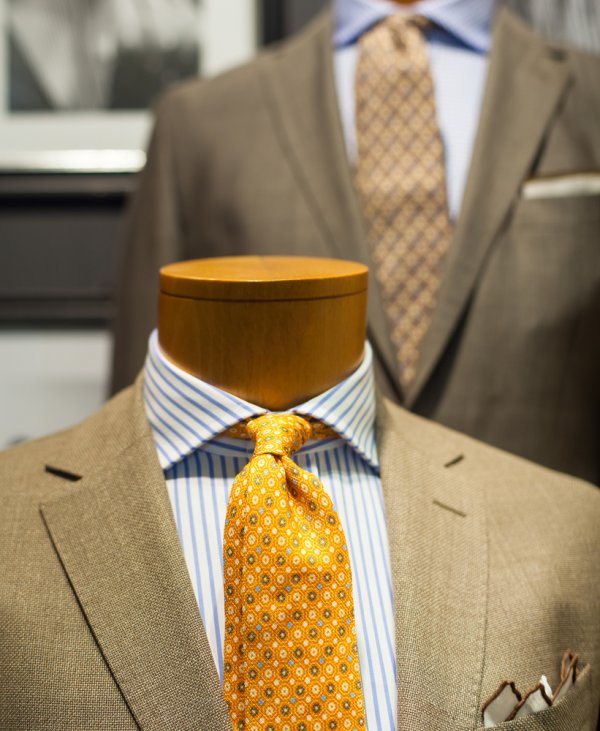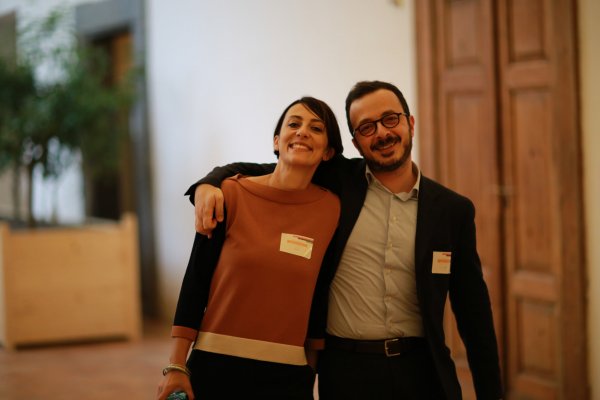Business Culture: Business Attire
Climate and Region
When most people think of Italy, they think of warmth and sunlight. But Italy’s climate is highly diverse, and can be quite cool, depending on your location. The Po Valley region, for example, has a changeable climate with cold winters and hot summers. Coastal regions are characterized by mild winters and warm, dry summers, while higher-altitude locations may be cold even in summertime and do receive snow in winter.
The differences between temperatures in Italy's various regions can be considerable, particularly in the winter. For example, you may find winter temperatures of −2°C (28°F) in Milan to the north, 8°C (46°F) in Rome, and 20°C (68.0°F) in Palermo. Summer temperatures tend to be more stable throughout the regions, although the northern areas tend to be cooler and rainier in the summer. Cities such as Milan and Venice average between 32°C and 35°C (90°F and 95°F) in August, the hottest month, while temperatures south of the Po River may rise as high as 38°C or 42°C (100 or 108°F). Large cities like Milan and Rome can experience considerable heat islands, where temperatures are higher than usual in either the summer or the winter.
Depending on where you are planning to go, you could experience rain in any season. Check the forecast for the region you’re planning to travel to, and bring rain gear just in case.
Meetings and Presentations
In Italy, image is everything. Italians consider la bella figura—a good impression—to be extremely important in business relationships, and you will be assessed based on your clothing in both the cities and in smaller towns. Dressing down can send the message that the other person isn’t important to you. Also, your dress indicates your social status, level of education, and general competence. When doing business with Italians, dress to impress.
Italians pay attention to fashion, and you should, too, if you want to make a good impression. Suits are worn by both men and women in business settings; conservative yet stylish choices will rarely go wrong, especially if you choose designer name brands. Always make sure your shoes are not scuffed, and wear good-quality leather shoes and belts.
Men generally wear sophisticated and pricey ties in Italy, paired with tailored dark suits in high-quality fabrics such as silk and lightweight wool. Never wear short-sleeved button-down shirts, even during the hot summer months, and always wear knee-length socks, as showing your legs under your suit is considered a bit gauche. Italian businessmen often wear accessories such as tie clips, designer watches, and cuff links.
The dress code for Italian businesswomen is usually conservative—yet expensive—elegance. Business suits may include skirts or slacks, although skirts are more common; business-appropriate dresses are also acceptable. As with men, women’s suits should be made of high-quality, usually natural fabrics, and should preferably be well tailored. Suits should be in fairly conservative shades; save bold colors for shoes and accessories.
Italian businesswomen often wear heavier makeup than Americans are used to; Italian women typically do not wear stockings in the summer months. Shoes should have a heel of at least two inches in height, although higher heels are common. Men’s shoes should be of high-quality, and have either pointed or square toes.
Women’s jewelry should be tasteful, high-quality, and not too heavy; diamond stud earrings and designer watches are common, with possibly another necklace or bracelet. Accessories such as good-quality leather briefcases and business-card holders also make a good impression.
It’s difficult to overstate how important it is to assure your clothes are highly presentable. Be sure shirts stay tucked in, and make sure jackets fit well enough to sit well both open and closed. Avoid any torn seams or worn areas, and never let your shoes look scuffed. It’s advisable to have your shirts, slacks and suits pressed professionally when doing business in Italy.
Social and Networking Events
Depending on the event, you may receive an invitation stating “formal” or “informal.” But "informal" in Italy doesn’t necessarily have the same connotation you might expect if you are from a less fashion-conscious culture; it’s rarely acceptable to arrive in a T-shirt and jeans. Often, "informal" dress means stylish, fashionable clothing in the smart-casual category; it may include a jacket or tie requirement for men.
“Formal” in Italy usually means what would be called “black tie” in some other places. It often requires a tuxedo for men and an evening gown for women. These events are not very common, however.
During leisure time, jeans are acceptable—dark-wash, fashionable jeans are better; avoid fading or tears. Shorts are usually unacceptable unless you are at the gym or want to advertise the fact that you are a tourist. Bear in mind that if you plan to enter an Italian church, you may not be permitted entry if you are wearing a sundress, shorts, short skirt, or a top that leaves your shoulders bare. In more formal restaurants, a jacket is often recommended for men.
Article written for World Trade Press by Jennifer Williamson.
Copyright © 1993—2024 World Trade Press. All rights reserved.

 Italy
Italy 



